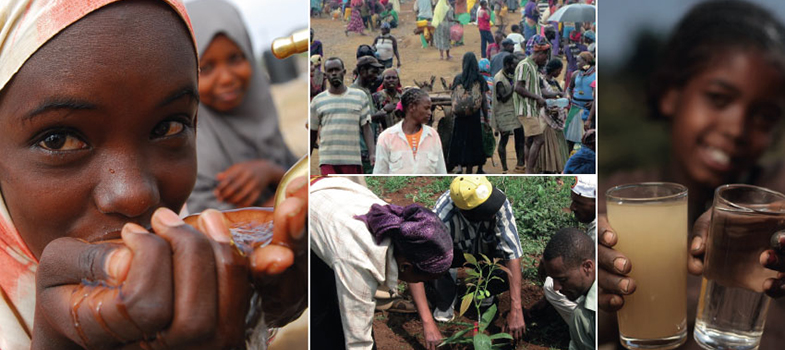5.2 Making community participation inclusive and accessible
Community participation is a common practice in rural areas when a given service provider, be it government or non-government, is planning to implement a project. This participation aims to introduce the project activities and mobilise communities to take part in the implementation process either by providing labour, as shown in Figure 5.2, or by making cash contributions. However, as noted above, this process is not always meaningful participation and frequently, it is not inclusive either. There are a number of possible reasons for this including:
- It does not involve representatives of all sections of the community.
- It does not involve community representatives in the planning and decision-making parts of the process.
- Even if people are present they may not be able to influence decisions because of the attitudes and beliefs of others, for example gender norms that mean women’s views are considered less important than men’s.
- The meeting place may not be physically accessible to everyone.

To illustrate how existing community participation practices could be transformed into inclusive participation, we have chosen examples from Ethiopia’s national approaches to promote safe water, sanitation and improved hygiene practices at community and institutional levels. These are Community-Led Total Sanitation and Hygiene (CLTSH), water, sanitation and hygiene committees (WASHCOs) and school WASH clubs. These approaches by their nature involve communities. Working further on these approaches can make community participation inclusive and accessible.
5.1.2 Benefits of participation
